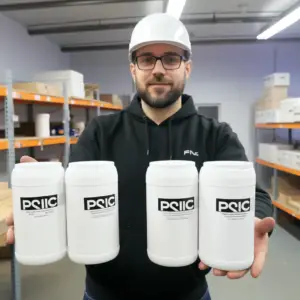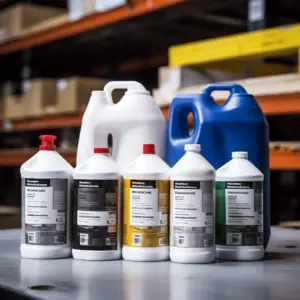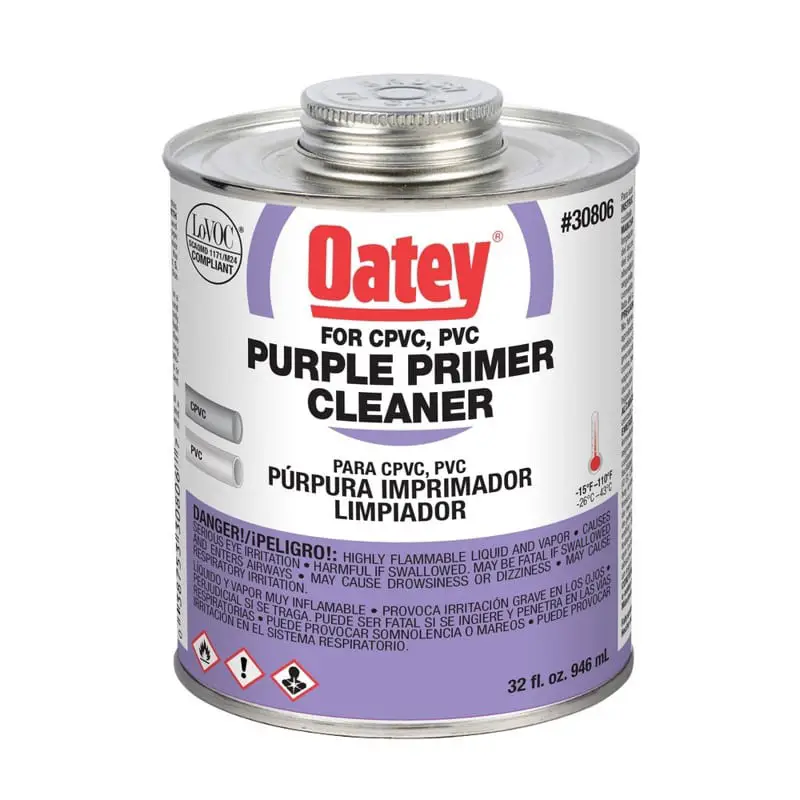PVC Cleaner vs. Primer, You need a PVC cleaner to remove oil, dirt, and grease from the PVC surface. While the PVC cleaner is always used to clean the PVC surface, you need the PVC primer to help you secure fittings and pipes. In simple terms, the PVC primer should also be used when you start using the PVC cleaner.
Most people don’t understand the difference between PVC cleaner and primer. If you know nothing about the two entities, it would be quite challenging to find the best variety that fits your preferences. To stop all the dilemmas and the arguments of PVS cleaner vs. primer, this article is a special guide.
Table of Contents
Comparison of PVC Cleaner and PVC Primer

As stated above, PVC cleaner is used to clean pipes, while on the other hand, PVC primer is majorly used to join the pipes together. PVC cleaner is comparatively cheaper than the primer when it comes to cost.
Another significant difference between the PVC cleaner and primer is time and harmfulness. PVC cleaner is not too procedural. PVC primer needs a lot of work before the task is labeled complete.
When PVC cleaner is used, it produces harmful fumes, but the product itself is not harmful. The PVC primer is typically toxic. That is why it needs a lot of coating.
PVC Cleaner or PVC Primer?
In most cases, the question boils down to the crucial point: Which product is the best to go for when it comes to PVS Cleaner and PVC primer? To get the right answer, you need to know the advantages and disadvantages of each product.
Let’s get started with that;
PVC Cleaner
Pros
- Easy To Use
The top feature that makes the PVC cleaner outstanding is its ease of operation. You don’t have to refer to the manual time after time.
Once you have the basic concepts at your fingertips, you’re good to use PVC cleaner. You will gain other advanced skills to make you a professional to lead the beginners with time.
- Cheap and Convenient
With just a few dollars, you can afford to have your PVC cleaner. It typically costs between $8 and $25.
Apart from the affordability, another important thing to note with PVC cleaner is convenience. You can find it in any store all over the world. Online from trusted outlets is allowed. Alternatively, you can opt for in-store shopping.
Cons
- It Can’t Be Used On Wet Surfaces
Most people are against PVC cleaners because they don’t work effectively in water-based areas. Therefore, that means that you cannot use your PVC cleaner in the toilet.
- Produce Fumes
Since the PVC cleaner cannot be used in water-based places, lack of moisture loosens the harmful fumes. The fumes can cause allergy and other serious respiratory tract diseases if you don’t wear the facemask. Due to the production of harmful fumes by the PVC cleaner, you need to be careful and adequately protected when using it.
Primer
Generally, primer is a cleaning and painting essential.
Pros
- Helps In the Effective Joining Of Pipes
After using a primer to join pipes, you will realize the pipe fits smoothly into each other like how a hand fits into a glove.
- Many Brands to Choose From
The best part of primer is that it comes in various options. If you find that a certain brand doesn’t work as expected from your side, then you can go for other options. Primer brands are endless, and surely you will find your favorite choice.
Cons

Toxic
The biggest drawback of PVC primer is based on its toxicity. Be keen when using it within your home or at any other work site.
Lengthy Process
If you want to prime, it will take you approximately 1 hour or more to complete the whole process. Primer needs several coatings because of its toxic nature.
Frequently Asked Questions
Q: Is primer necessary on my PVC?
A: It’s not a must that you use primer on PVC. However, experts recommend that you use it because it softens the surfaces of the PVC pipes, giving them a continuous smooth flow. Primer is also important in creating the even surface on which the solvent cement can work.
Q: What happens if you fail to use primer on PVC?
A: Primer is a protective element for PVC pipes. If you don’t use it on PVC, the pipes will rip off from the wall attached to it after some time. PVC can’t bind to the whole excellently without the primer.
Q: What can be used to remove the PVC Primer?
A: If you want to remove primer from the PVC, you can use the nail polish remover. Alternatively, you can clean the surface with a primer using methyl ketone. Methyl ketone is a household product mostly found in paint cupboards.
In Conclusion
The PVC cleaner is formulated to be used in cleaning materials like window frames and PVC piping. It’s made from a mixture of chemicals that dissolve debris, grease and stains from PVC.
You don’t need to worry about PVC cleaner damaging your PVC. They are aggressive in removing stubborn stains, but the cleaners cannot downgrade the structural integrity of your PVC.
Primer has the active ingredient of tetrahydrofuran like the PVC pipe cement. It can be used to remove the protective and glazed coat sound on the PVC to leave a rough finish for good bonding of the glue.
Most folks are unaware that the PVC primer and cleaner does the welding. The primer dissolves the PVC surfaces so that when a pipe and fitting are connected, they adhere and become a seamless material.
The cement is simply an adhesive that holds the pipes together, but the primer dissolves the PVC’S surfaces so that when the fitting and pipe are connected, they adhere and become a seamless material. Because the primer link is superficial, the two parts must be held together using cement.
PVC cleaners and primers are typically mixed into a single solution to clean and soften surfaces in a single process. Unless you’re working with a pipe that’s been exposed to some awful filth and oils, there’s no reason to make it a three-step procedure using contemporary primers and cleaners.


